The intelligent vehicle control device T-Box need be online all the time, and the car battery power supply cannot support too long time because of its own capacity and self-discharge. Normally new cars without any electrical appliances can only last about 4 weeks. If the vehicle is not started for a long time, the car engine can not be started very easy, and maybe the vehicle can not be controlled any more. So the power consumption current of the T-Box device is very important. The following is an example of the power consumption current test of the CC-688 device. The CC-368 and CC-338 are simply and the power consumption current will be lower.
Test Instrument: Agilent 66332A DC Power Source & USB Interface Module

ThinkPAD Note Book & Current Testing Software
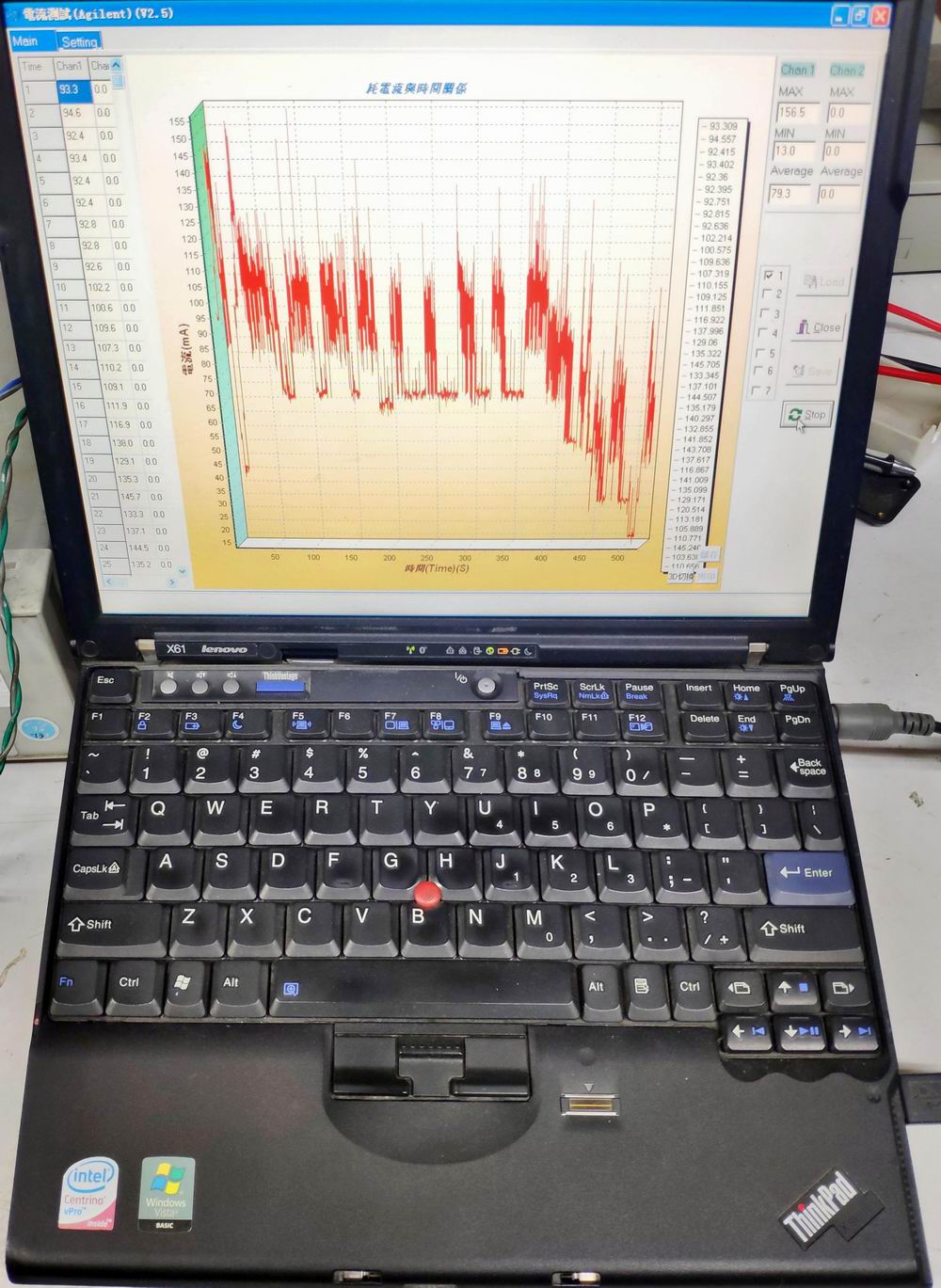
Test Device: CC-688 (4G + Password Touch Pad + Push Start Button + Bluetooth + OBD) without WiFi Hot Spot
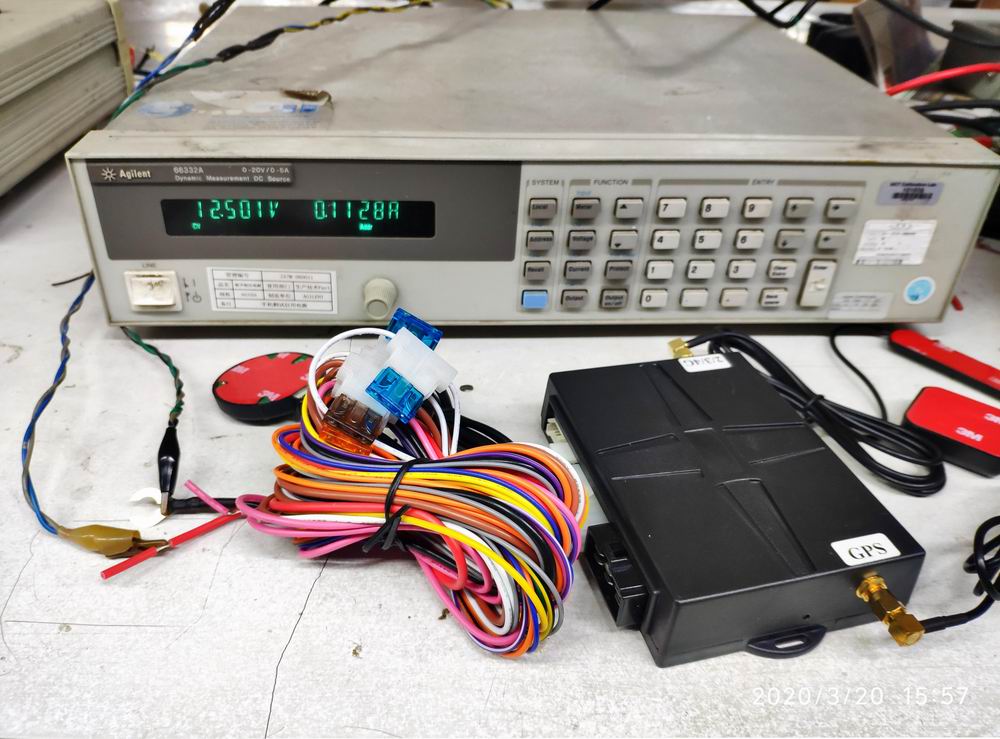
Test Working Voltage: DC 12.5V
Test Location: CARSCOP Factory Workshop
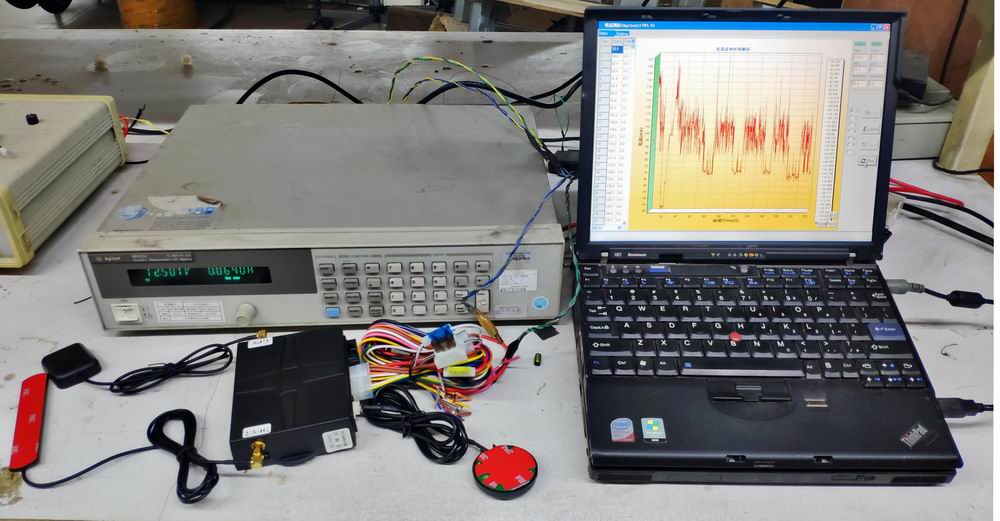
Test State 1: Static Standby State
The CC-688 will enter the static standby state after stop moving over 5 minutes. In this state, the GPS module is turned off, the OBD module is turned off, Bluetooth is kept in broadcasting, and the 2/3/4G module enters the power-saving state, but the 2/3/4G module will keep the device online and will send heartbeat data packets every 2 minutes. This static standby state can accept internet and SMS control commands, and the car status also can be monitored. Under this state the T-Box power is supplied by car battery, and this state is the most common working state of T-Box. The consumption of car battery power is basically consumed in this state.
Note: The current of the T-Box device is pulsed. It cannot be simply calculated according to the average value. It needs special software to calculate the time and current of the pulse and the weighted average of the change. Therefore, ordinary multimeters cannot measure the T-Box device power consumption and average current.
The following is the current change diagram of the T-Box from the driving state to the static state:
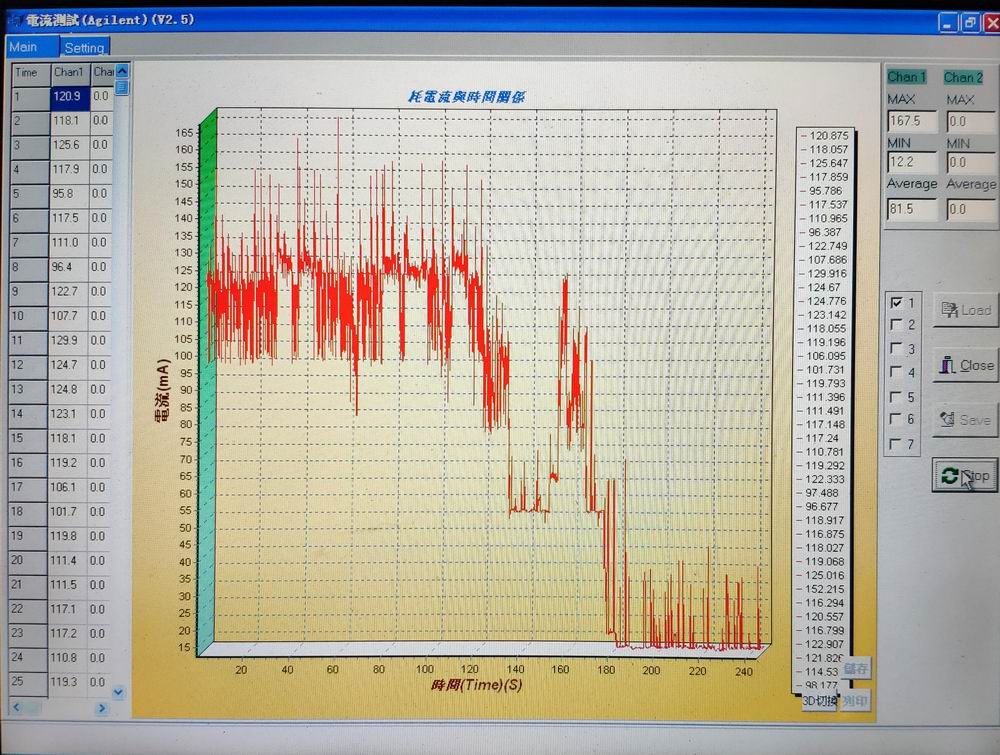
The following is the current diagram and average value of the T-Box in the static standby state:
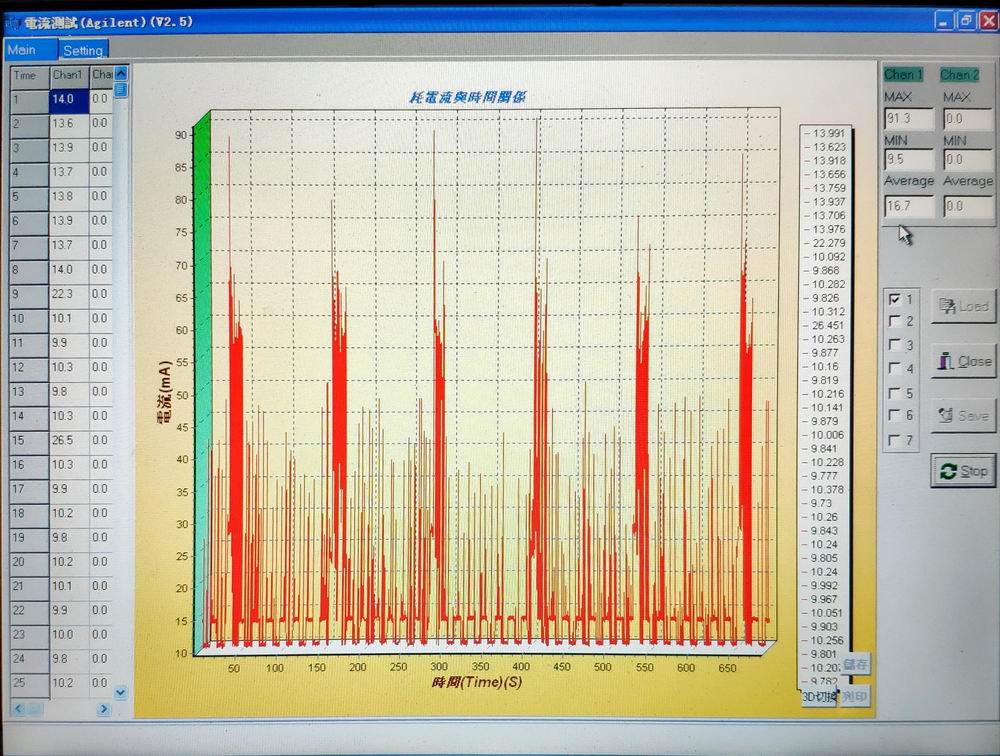
Zoom in the current display section:
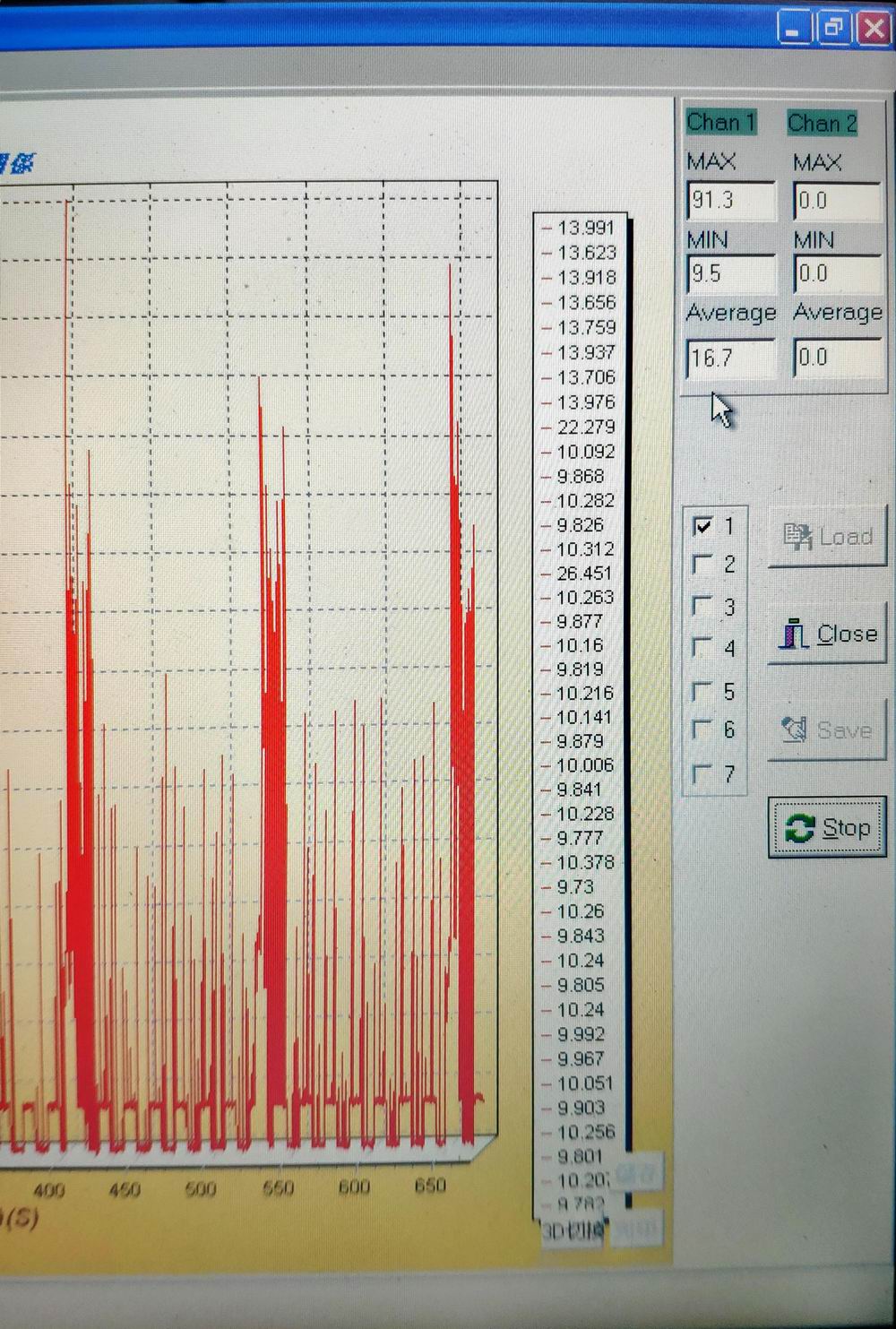
MAX Current: 91.3mA
MIN Current: 9.5mA
Average Current: 16.7mA
So in the static standby state, the average power consumption current of CC-688 is 16.7mA.
Note: The current is also related to the signal strength of the 2/3/4G network. If the signal is weak, the current will increase. If there is no network, repeated network searching will cause more power consumption. Also repeated requests for vehicle status will cause increased power consumption. Frequent upload of T-Box device stress events will also cause increased power consumption. The above test is the static standby power consumption current under normal static standby state and no abnormal events.
This static standby current may cause 10-20% reduction of the car battery time. For new car batteries, normally it can standby for about one month. After installing CC-688, the standby time may be reduced to between 3-4 weeks. Normally the standby time of the old car battery is 2-3 weeks. After installing CC-688, the standby time will be reduced to about 1.5-2 weeks. The longer the battery is used, the greater the car battery standby time loss. Therefore, for vehicles that have not been started or rented out for a long time, It is necessary to start engine about 30 minutes once a week. The car battery voltage can be upload to server to report the car battery low voltage alarm.
Test State 2: Driving Working State
The CC-688 T-Box will immediately switch to driving working state when there is a vibration trigger. In this state, the GPS is turned on, the OBD module is turned on, Bluetooth keeps broadcasting, and the 2/3/4G module enters the normal state to keep the T-Box online, and the T-Box will send located data packages to platform server every 10-30 seconds. This driving working state can accept network and SMS control commands very fast. This state is the working state of the car is driving. At this time, normally the car engine is started, so the car generator will charge the car battery. The power consumption of the T-Box is basically provided by the car generator, it will not use the car battery power, At this time, the working current maybe up to about 100mA.
The following is the current change diagram of the device from the static standby state to the driving working state:
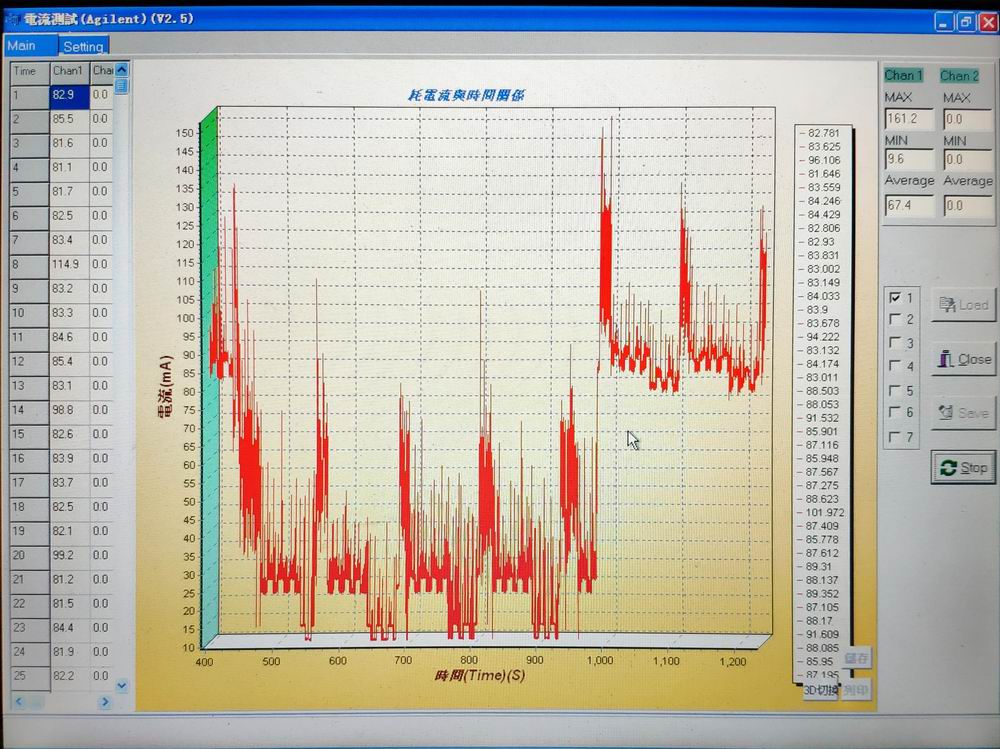
The following is the current diagram and the average value of the T-Box in the driving working state:
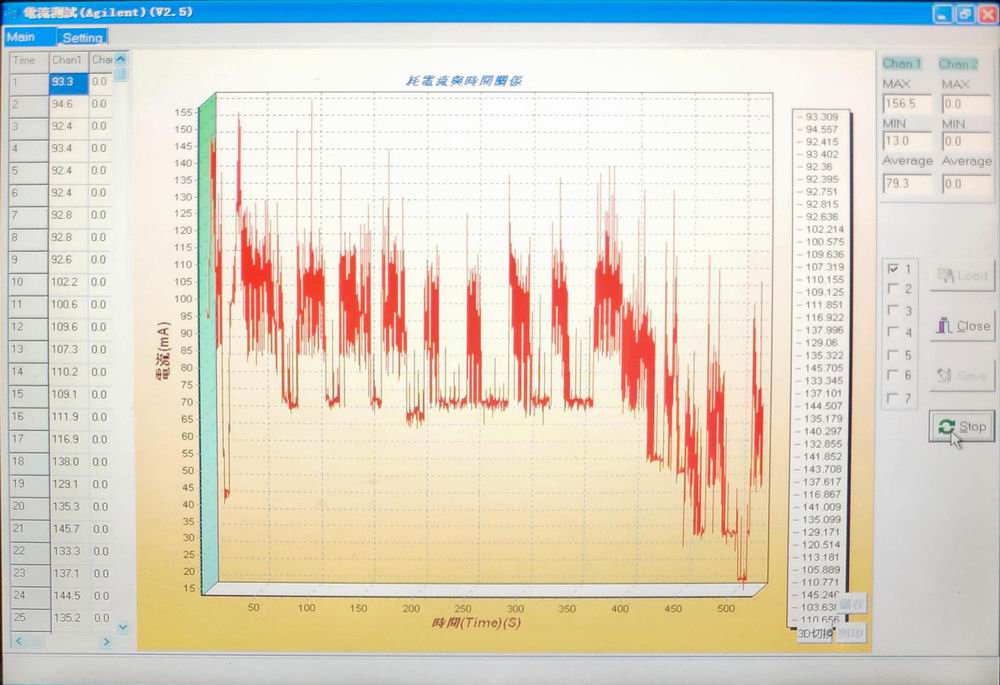
MAX Current: 156.5mA
MIN Current: 13.0mA
Average Current: 79.3mA
Note: In some places with frequent vibrations, the T-Box may frequently enter driving working states repeatedly, such as roadside, construction site, airport, etc. This will make the T-Box power consumption will be higher. For these special scenarios, software needs to be modified. Change the trigger conditions or change the vibration trigger threshold to avoid high power consumption.
The above 2 states are the most common 2 states. Other short-term working states have a short duration and have little effect on power consumption. Each vehicle ’s power consumption and battery are different, each different application scenarios will cause different power consumption, but they are normally not much different from the above 2 states, this test can be as a reference. For application scenarios that require special power saving, additional software and hardware need to be customized according to requirements to meet special power saving requirements.


